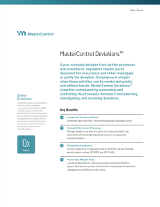
GxP Lifeline
Quality Systems, Part 1: Deviation Management and Investigations

Performing deviation investigations and writing reports can be a daunting task for busy professionals. This overview of deviation management will describe how to initiate a deviation and the investigation process, starting with how to characterize the failure or deviation, how to define the problem clearly, and how to perform an investigation. In addition, it will provide examples of when it is appropriate to use each of the common root cause analysis tools and how to write a clear, concise investigation report to ensure you implement the appropriate corrective action/preventive action (CAPA) to eliminate the cause of the deviation.
Deviation Management Fundamentals
Managing deviations and investigations efficiently is critical to ensuring product quality, compliance with regulations, and continuous improvement. An effective quality management system (QMS) must include procedures to identify, document, segregate, evaluate, and disposition production and post-production issues. You need to report and document the deviation as soon as it is identified. This includes collecting all relevant data, such as the time and date of the event, and maintaining a record of the personnel involved and any environmental factors that may have contributed to the deviation. It also requires that you check previous deviations for repeat events.
It’s best to use reputable quality event management software to replace manual tracking and trending activities that take so much time to maintain to increase efficiency. These systems are inexpensive and cost less than hiring someone to manage a paper document system. They are easily validated and automatically track deviations and CAPAs along with providing helpful reports that trend deviation/CAPA metrics. They also automatically send reminder emails so you can focus on the more important task of performing the investigation to ensure the problem is not repeated instead of chasing paper and sending email reminders manually.
Closing the Loop in Deviation Management
Deviation management follows a closed-loop process. When performing investigations, you must be sure to characterize the failure correctly, describe the circumstances in which the problem occurred, and answer the following questions:
- What is the problem?
- When and how did it happen?
- Where did it happen?
- Who was involved?
- What is its significance (risk)?
You perform an impact assessment to identify the risks and liabilities and must consider the following:
- Is there any immediate threat to employee, end user or health care professionals, or patient safety?
- Is there an impact on the product or material quality and/or can it impact the regulatory filing?
- Is there a data integrity risk?
- Is there a significant process omission or significant modification to a process step or a deliberate attempt by an employee to deviate from procedure or good manufacturing practices (GMPs) and potentially impact product quality, end user and patient safety, or data integrity?
The Essential Role of Root Cause Analysis in Manufacturing
Performing a root cause analysis (RCA) in manufacturing to understand how to correct the problem as well as preventing future occurrences (CAPA) is key to properly managing deviations. Selecting the appropriate RCA tools from the many available can be difficult. Start with the “5 Why’s” first for all deviations. If that doesn’t illuminate the root cause, use one or more of the other available tools such as the Fishbone diagram, Pareto or trend charts, brainstorming, etc., depending on the complexity of the issue being investigated. For more technically challenging problems, a Design of Experiments (DOE) may be needed as part of the Failure Mode and Effects Analysis (FMEA).
Root cause analysis (RCA) in manufacturing requires that you use your experience to determine what could have caused the defect or problem and be sure to list all probable causes from highest to lowest probability. Be careful not to jump to conclusions about the root cause without thinking about all the possible causes as this can send you down the incorrect investigation path. Use systems thinking to determine what changes occurred, what differences exist, and what commonalities exist. This includes reviewing procedures, batch records, and other relevant documentation, as well as conducting interviews with personnel involved in the event.
Once you have completed a thorough investigation, you must properly document the investigation. Proper deviation management includes presenting the information simply, logically, and concisely, which is important to enable the reader to follow your logic on how you arrived at your conclusion. Be sure to use objective language, present only relevant data, support a claim with a convincing set of reasons, and present the facts to show that you know what they mean. It’s important to review the report as an outsider to be sure you have presented the information clearly and logically.
Conclusion
In summary, by using reputable quality event management software and selecting the appropriate root cause analysis tools, deviation management can be more effective and efficient. These tools help to ensure investigations are thorough and the problem is fully resolved, thereby ensuring the quality and safety of products and processes. It is also important to have a culture of continuous improvement, where deviations and investigations are viewed as opportunities to identify and address potential issues before they become major quality events. Remember these investigations will be read by inspectors long after you have written them and when you are not there to answer questions. They need to tell the complete story of what happened and show that the deviation was adequately resolved.
Stay tuned for our next blog, Quality Systems, Part 2: Developing Effective CAPAs, which will provide tips to help you develop appropriate corrective and/or preventive actions that ensure the problems are not repeated.

